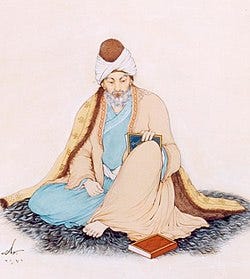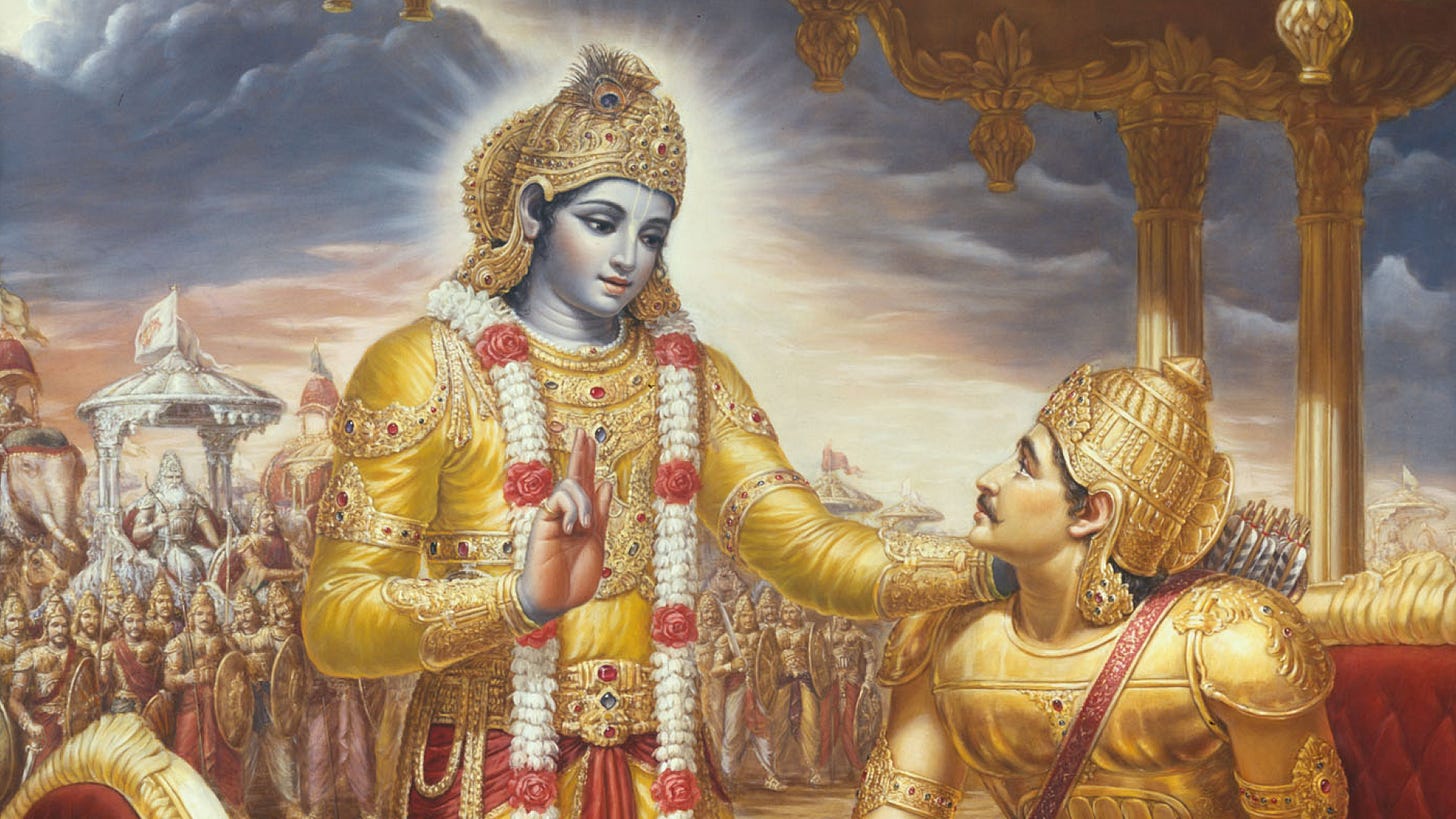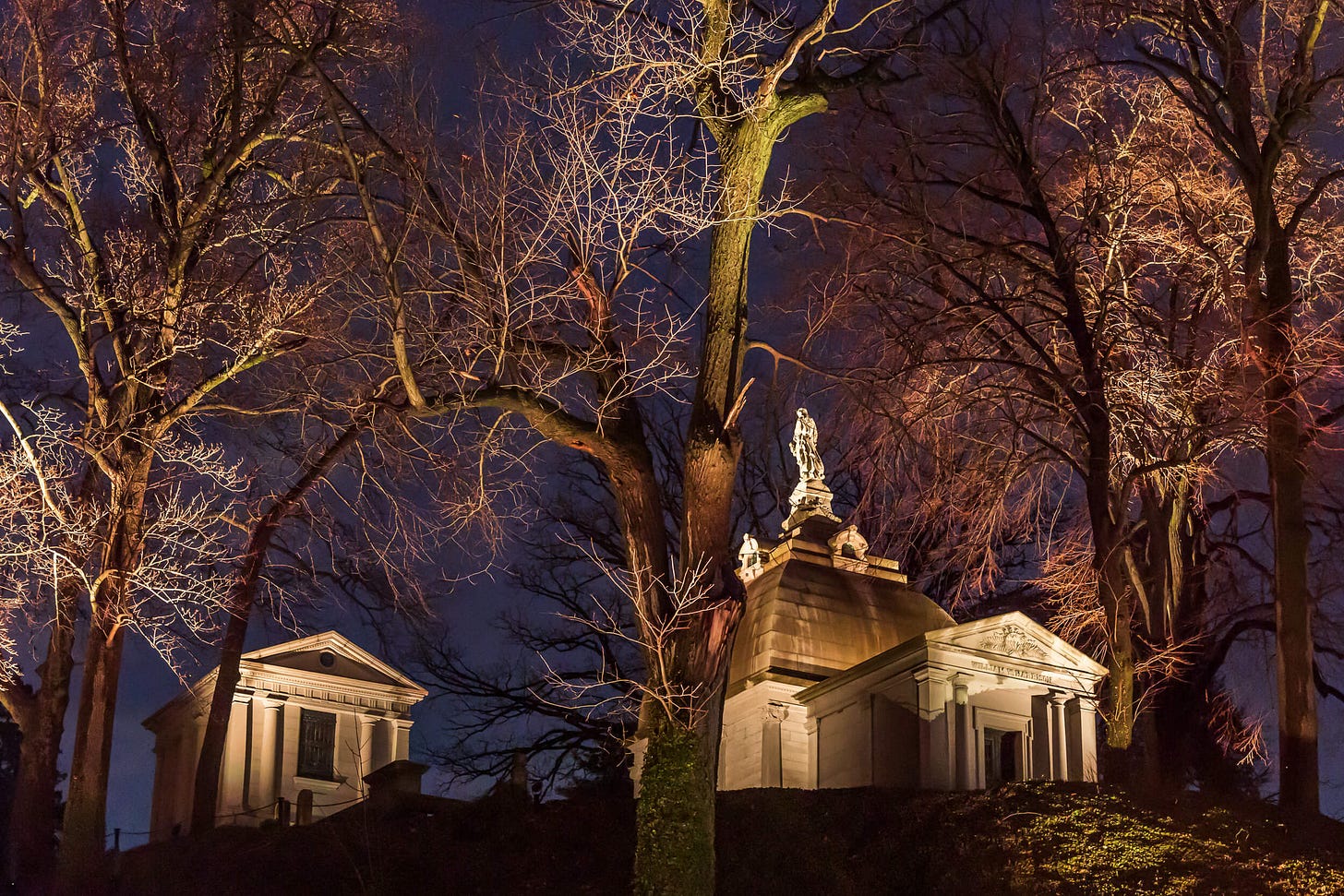My favorite quote from high school came back to me recently:
The lamps are different but the light is the same/
One matter, one energy, one Light, one Light-mind, endlessly emanating all things.
-Rumi
Speaking to the unifying core of all humans.
I first heard this quote during one of my odd jobs senior year: hosting a weekly yoga session in Kleman Plaza, downtown Tallahassee. The teacher would conclude every class with those words (along with the compulsory namaste).
I was reminded of this quote through two seperate recent events. Firstly, my Indian Philosophy class began reading the Bhagavad Gita (which I had tried to read, and only got a little of the way in, during the summer).
Secondly, I randomly saw that Penn’s Buddhism and Meditation club was going on a daylong retreat, and I decided to tag along. Though I had been in their groupme for four years, this was the first time I actually did anything with them.
I could only catch a glimmer of what I wanted to say here. In the spirit of this blog, pull what you can from this raw and rare soup — most likely not a lesson or insight, but a feeling.
***
Side note: I am starting a new series soon with guest posts from friends. Please send a message if you have anything to share — no theme, guidelines, or pressure! Would love to help too!
***
The Bhagavad Gita
The Gita is a syncretic, fascinating, and altogether strange text. It is a neat bundling of the different doctrines and religions and philosophies floating around at the time of its writing (~ 0 CE), but also an apology for action.
It addresses the fundamental paradox of (IMO) all religion, but especially Hindu/Buddhist/ascetic traditions: if action is bad, why act? If world bad, why be in the world? The world and our attachments is suffering, so we remove all that makes us suffer. Which is why some have said the Gita was a response to a brewing social crisis — young people were rejecting social norms and status to go live in mountains and monasteries (sounds awfully hippie!).
I think this is present in Christian thinkings, though the institutions do a good job of covering it up (ahem Protestants): Jesus says the only thing that matters is a belief in him. We cannot get to heaven by good deeds. All sin is the same, and no sin is unforgiveable as long as you repent and believe. Case in point the forgiven sinner on the cross.
So the Gita introduces Karma Yoga, or the practice of detached action. The illumined yogi does things not because of a desire for the fruit of the action, but simply because they are things to be done.
What God’s Will gives
He takes, and is contended.
Pain follows pleasure,
He is not troubled.
To drive it home:
“Action rightly denounced brings freedom;
action rightly performed brings freedom;
both are better
than mere shunning of action.
When a man lacks lust and hatred,
His renunciation does not waver.”
After all, the whole book is Mr. God (Krisna) convincing the rather Buddhistic/Jainistic/pacifistic/ascetic Arjuna (the warrior) to fight a war — what a strange text to be underpinning the World’s greatest religions of peace! This tension is too much for me to explore here, but Gandhi’s justification of revering the Gita is a good place to start.
What’s more interesting to me is the core message: knowing “God,” or perhaps God essence, is a personal and internal journey. Those who worship without intimate knowlege of what this essence is is lost, no matter how many rituals or prayers they do. This mystical detatchment — the abstraction away from simply doing good and avoiding bad — is what draws me so strongly to the text.
Huxley’s Perennial Philosophy
Aldous Huxley, writing an amazing introductory essay to my version of the Gita, describes it as the “Perennial Philosophy” that undergirds all major religions.
1. Our world of things is a seperate, yet reminiscent, copy of the foundational “Divine Ground.”
2. All humans, through practice and intuition, can realize the existence, and connect to, the Divine Ground.
3. Humans have a personal ego and eternal Self/Soul. We can “wake up” to our eternal soul and detatch from our materialistic ego.
4. The greatest goal in life is to realize the truth and connect with the Divine Ground.
As he concludes:
Happily there is a Highest Common Factor of all religioins, the Prtennial Philosophy which has always and everywhere been the metaphysical system of the prophets, saints, and sages.
The paths are different, but the destination is the same.
Meditation Retreat
The meditation retreat was at the Won Institute of Buddhism. I was suprised to find out that Won Buddhism is a new Korean religion with only loose ties to traditional Buddhism.
Naturally, as I am with all (new) religions, I was leery of any particularly cultish or exploitative practices. But in my experience, Won Buddhism was just the Perennial Philosophy on steroids. It was a shamelessly universalist, anti-doctrinal teaching stressing the similarity of people, radical compassion, detatchment, etc. The actual practice was nothing new, either; OM, mantra, loving-kindness, etc.
My favorite part was a reflection on this parable or allegory or whatever:
We are waves on the ocean. We look left and right and forward and back, and are ashamed at how we are different than the others. “That one is bigger.” “That one is prettier.” “That one is stronger.” But all we have to do is look under the surface, even on the days when the waves and surface are the choppiest and most chaotic. Because under the water, the ocean is forever still, unchanging, deep. And the same.
Not only did this tie back to the Perennial Philosophy — the ocean as the Divine Ground, with the waves as our chaotic and materialistic selves — but also the notion of the sameness that undergirds the Rumi quote.
Wrapping Up
The night of the retreat, I felt a deep peace and flow while running 12 miles in the dark (which is exceptional in itself, because I had run 26.4 miles the day before — a story for next time). It felt as if layers of thought were pulled away, leaving me with a clear view of my life and self, which has absolutely been buffeted by exceptional change and chaos and pain recently.
I had the purest realization around 6.5 miles in, running by the Laurel Hill cemetery. For those who don’t know, this is a large cemetery on a huge hill overlooking the Sckuykill, and it has these absurdly large masoleums. Some of the graves had strobelights pointing to the entrances, which made the names barely visible a few stories down on the trail.
This was ridiculous because
a. that particular section of the trail had NO LIGHT — the lampposts were out — meaning the only light source was these grave lights on top of a cliff
b. NO ONE could see these lighted masoleums from the road/cars, and only runners like me on the trail would even get a glimpse of them (and I was the only one out there).
Who were they lighted up for? Why are they lighted?
Once we die, we are the same bones in the ground. No matter who you were in life, no matter how big you can build your tombstone, your temple — you will be forgotten and sink into a landscape of millions and billions of other bones and graves.
Much like other existential thoughts on nothingness and smallness and insignificance, this is either a great source of depression or freedom. Will you find beauty or fear in the void past the end?
-J3








